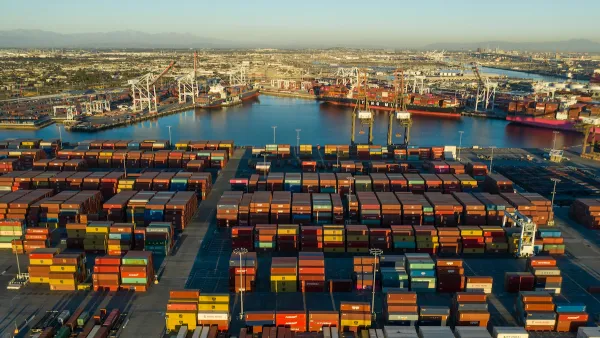The McKinsey Global Institute has just published a major report outlining four potential scenarios for urbanization in China.The main thrust of the report is that China needs to focus less on growing its cities and more on making them efficient and productive. Given the massive levels of capital investment Chinese cities have seen over the last 20 years, it makes sense that the country's urban planners need to find ways to squeeze more capacity out of these systems. After all, as McKinsey projects, another 350 million people will need to be accommodated, some 250 million of them as rootless rural migrants.
The McKinsey Global Institute has just published a major report outlining four potential scenarios for urbanization in China.
The main thrust of the report is that China needs to focus less on growing its cities and more on making them efficient and productive. Given the massive levels of capital investment Chinese cities have seen over the last 20 years, it makes sense that the country's urban planners need to find ways to squeeze more capacity out of these systems. After all, as McKinsey projects, another 350 million people will need to be accommodated, some 250 million of them as rootless rural migrants.
While McKinsey forecasts that the most likely trajectory, given no intervention, is a dispersal of urban population growth to a much larger array of mid-sized cities (which is China means settlements of 1.5-5 million people!). The report argues that while the central government can't directly control urban growth, it can utilize infrastructure spending and political muscle to concentrate growth in a handful of larger cities, reducing land and energy consumption and concentrating domestic talent and foreign investment in highly productive clusters.
Along with the full report is an interactive feature that lets you play out some of the projections. Watching the entire eastern seaboard of China turn into a more-or-less continuous sprawl of urbanization is fascinating. I wonder how Europeans might have felt in the 1960s watching the same thing for North America (they had to make do with the static maps of Jean Gottman's Megalopolis).
A summary of the report is available in the McKinsey Quarterly.
While we're on it, anyone wishing to understand the last 20 years of Chinese urbanization (and the deep historical context of the last 100 years) ought to be reading Tom Campanella's stupendous book Concrete Dragon (Amazon), published earlier this year.

Analysis: Cybertruck Fatality Rate Far Exceeds That of Ford Pinto
The Tesla Cybertruck was recalled seven times last year.

National Parks Layoffs Will Cause Communities to Lose Billions
Thousands of essential park workers were laid off this week, just before the busy spring break season.

Retro-silient?: America’s First “Eco-burb,” The Woodlands Turns 50
A master-planned community north of Houston offers lessons on green infrastructure and resilient design, but falls short of its founder’s lofty affordability and walkability goals.

Test News Post 1
This is a summary

Analysis: Cybertruck Fatality Rate Far Exceeds That of Ford Pinto
The Tesla Cybertruck was recalled seven times last year.

Test News Headline 46
Test for the image on the front page.
Urban Design for Planners 1: Software Tools
This six-course series explores essential urban design concepts using open source software and equips planners with the tools they need to participate fully in the urban design process.
Planning for Universal Design
Learn the tools for implementing Universal Design in planning regulations.
EMC Planning Group, Inc.
Planetizen
Planetizen
Mpact (formerly Rail~Volution)
Great Falls Development Authority, Inc.
HUDs Office of Policy Development and Research
NYU Wagner Graduate School of Public Service





























